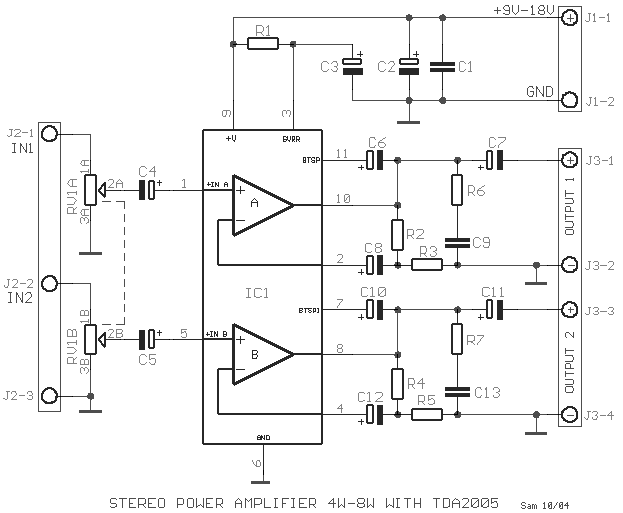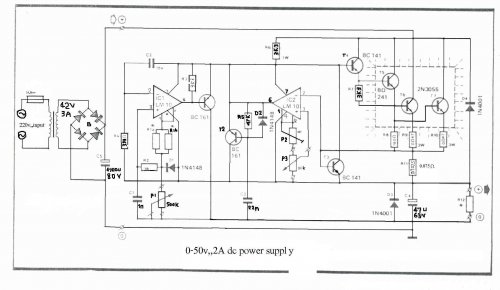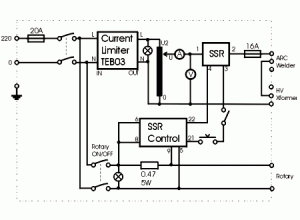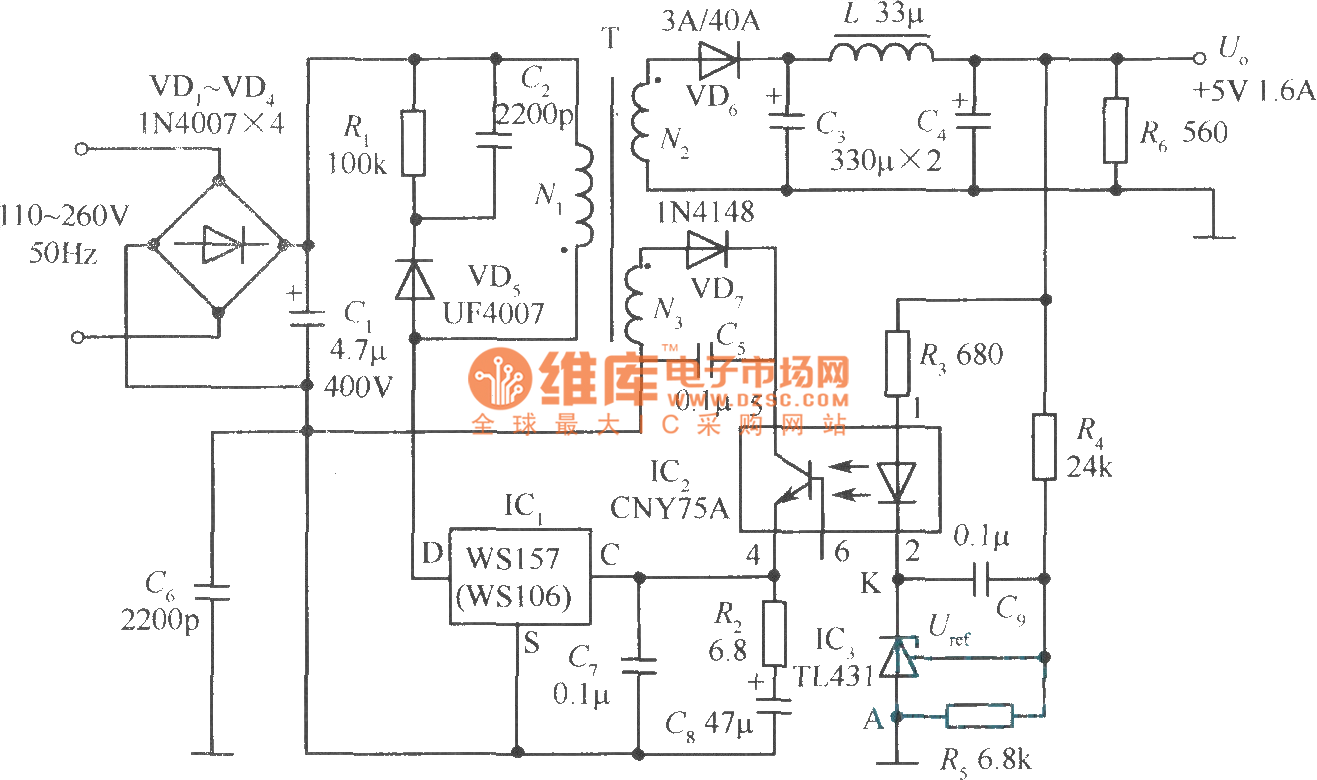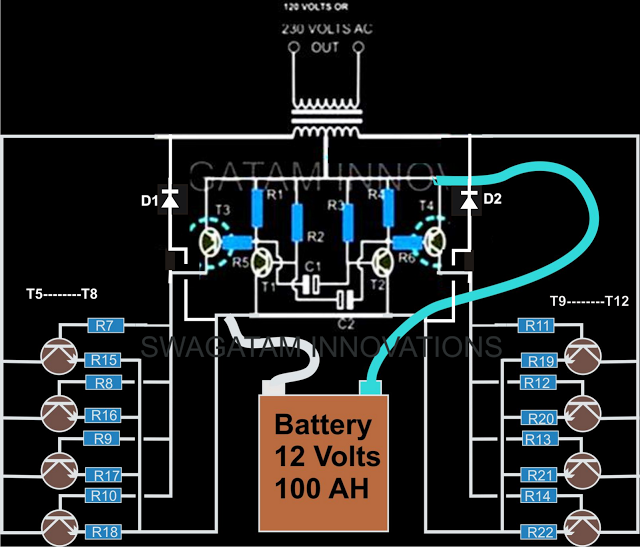
stabilised power supply current limiting
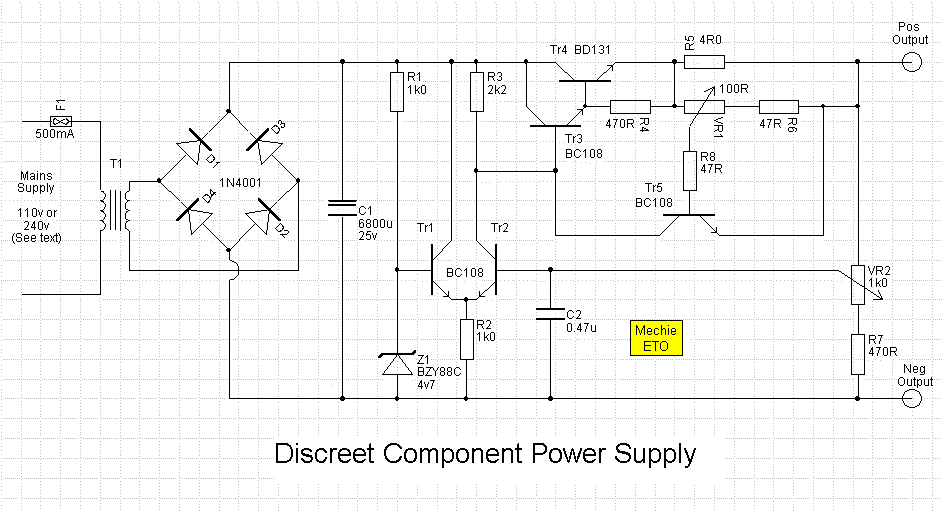
An error amplifier is constructed using transistors Tr1 and Tr2, configured as a differential amplifier, commonly referred to as a long-tailed pair, with the collector leads being a notable feature. One input of this differential amplifier is sourced from a zener diode that provides a stable 4.7 volts, while the other input is a portion of the output voltage. Any difference between these two inputs will result in a change in the current through resistor R3, which in turn alters the voltage across it and affects the base voltage of transistor Tr3. Transistors Tr3 and Tr4 are arranged as a Darlington pair, which significantly enhances gain to ensure stable regulation. This Darlington configuration can be visualized as a single transistor in an emitter-follower setup, where the emitter voltage tracks the base voltage (minus the 1.2 volts required for forward biasing the two base-emitter junctions), but with a much higher current handling capability. Current limiting is managed by transistor Tr5, which is forward-biased by a portion of the voltage drop across the current sensing resistor R5, adjusted by potentiometer Vr1. As the current through R5 increases, the voltage drop across it also rises, which begins to turn on Tr5, consequently reducing the base current to Tr3 and Tr4, thereby decreasing the output voltage. Transistor Tr4 necessitates a heatsink rated at no more than 10 degrees C/Watt, and R5 is expected to dissipate 4 Watts (calculated from 1A * 4Ω), necessitating a 5W resistor or four 1Ω 1W resistors in series, which should be mounted on a metal surface due to heat generation. Since the unit lacks an integrated current measurement feature, a scale can be marked around the knob of potentiometer Vr1 to indicate selectable current levels before connecting a load. This can be achieved by connecting an ammeter directly across the power supply output, which will trigger the current limiting function. Adjust Vr1 until the ammeter reads 500mA and mark the knob position. This process should be repeated for other current levels such as 600mA, with caution advised to avoid prolonged shorting of the supply, as Tr4 and R5 will heat up quickly.
The described circuit employs a differential amplifier configuration for error detection and regulation, utilizing a zener diode for voltage stability. The differential amplifier's design, featuring Tr1 and Tr2, allows for precise comparisons between a stable reference voltage and a feedback voltage derived from the output, enabling effective regulation of the output voltage. The current sensing mechanism, facilitated by R5, provides an essential feedback loop to maintain output stability under varying load conditions.
The Darlington pair formed by Tr3 and Tr4 amplifies the current gain, ensuring that the output can handle higher currents without compromising voltage regulation. The emitter-follower configuration enhances the circuit's ability to drive loads while maintaining a stable output voltage. The inclusion of a current limiting feature via Tr5 protects the circuit from overcurrent conditions, enhancing reliability and preventing damage to components.
Thermal management is critical in this design, particularly for Tr4 and R5, which require adequate heat dissipation measures to function effectively under load conditions. The suggested use of a heatsink and proper resistor ratings ensures that the circuit operates within safe thermal limits. The implementation of a user-adjustable current scale on Vr1 allows for convenient operation and adaptability to various load requirements, making the circuit versatile for different applications.
In summary, this circuit design effectively combines error amplification, current regulation, and thermal management to create a robust power supply solution, suitable for a range of electronic applications.An error amplifier is formed from Tr1 and Tr2, wired as a differential amplifier (often called a long-tailed pair - look at those collector leads). One input of this diff. amp is taken from the zener diode which provides a stable 4. 7 volts, the other diff. amp input is a fraction of the output. Any difference between the two will cause the curren t through R3 to alter and so will alter the voltage across it and hence to the base of Tr3. Tr3 and Tr4 are connected as a darlington pair, this produces a very high gain to aid stability of regulation. This darlington pair can be visualised as a single transistor connected in an `emitter-follower` configuration, the emitter voltage will follow the base voltage (less the 1.
2v required to forward bias the two base-emitter junctions), but with a much greater current capacity. Current limiting is provided by Tr5 which will be forward biassed by a fraction of the voltage drop across the current sensing resistor, R5, set by Vr1.
As the current through R5 increases so does the voltage dropped across it, this begins to bias Tr5 on and in so doing causes Tr3/Tr4 to be deprived of base current and so reduces the output voltage. Tr4 needs a heatsink of at least 10 degrees C/Watt (10C / W) and R5 is expected to carry (1A * 4R) = 4 Watts, so it will need to be a 5W device or four 1R 1W devices in series, mount them on a peice of metal as they will get hot!
As there is no current measurement built in to the unit, a useable scale could be marked around the potentiometer Vr1`s knob such that a known current could be chosen in advance of connecting a load. To do this, connect an ammeter directly across the power supplie`s output - this will instantly overload the supply and cause the current limiting to operate.
Adjust Vr1 so that the ammeter displays 500mA and mark the knob`s position. Repeat the procedure for 600mA, etc. ## DON`T keep the supply shorted for too long as Tr4 and R5 will soon get hot! ## 🔗 External reference
The described circuit employs a differential amplifier configuration for error detection and regulation, utilizing a zener diode for voltage stability. The differential amplifier's design, featuring Tr1 and Tr2, allows for precise comparisons between a stable reference voltage and a feedback voltage derived from the output, enabling effective regulation of the output voltage. The current sensing mechanism, facilitated by R5, provides an essential feedback loop to maintain output stability under varying load conditions.
The Darlington pair formed by Tr3 and Tr4 amplifies the current gain, ensuring that the output can handle higher currents without compromising voltage regulation. The emitter-follower configuration enhances the circuit's ability to drive loads while maintaining a stable output voltage. The inclusion of a current limiting feature via Tr5 protects the circuit from overcurrent conditions, enhancing reliability and preventing damage to components.
Thermal management is critical in this design, particularly for Tr4 and R5, which require adequate heat dissipation measures to function effectively under load conditions. The suggested use of a heatsink and proper resistor ratings ensures that the circuit operates within safe thermal limits. The implementation of a user-adjustable current scale on Vr1 allows for convenient operation and adaptability to various load requirements, making the circuit versatile for different applications.
In summary, this circuit design effectively combines error amplification, current regulation, and thermal management to create a robust power supply solution, suitable for a range of electronic applications.An error amplifier is formed from Tr1 and Tr2, wired as a differential amplifier (often called a long-tailed pair - look at those collector leads). One input of this diff. amp is taken from the zener diode which provides a stable 4. 7 volts, the other diff. amp input is a fraction of the output. Any difference between the two will cause the curren t through R3 to alter and so will alter the voltage across it and hence to the base of Tr3. Tr3 and Tr4 are connected as a darlington pair, this produces a very high gain to aid stability of regulation. This darlington pair can be visualised as a single transistor connected in an `emitter-follower` configuration, the emitter voltage will follow the base voltage (less the 1.
2v required to forward bias the two base-emitter junctions), but with a much greater current capacity. Current limiting is provided by Tr5 which will be forward biassed by a fraction of the voltage drop across the current sensing resistor, R5, set by Vr1.
As the current through R5 increases so does the voltage dropped across it, this begins to bias Tr5 on and in so doing causes Tr3/Tr4 to be deprived of base current and so reduces the output voltage. Tr4 needs a heatsink of at least 10 degrees C/Watt (10C / W) and R5 is expected to carry (1A * 4R) = 4 Watts, so it will need to be a 5W device or four 1R 1W devices in series, mount them on a peice of metal as they will get hot!
As there is no current measurement built in to the unit, a useable scale could be marked around the potentiometer Vr1`s knob such that a known current could be chosen in advance of connecting a load. To do this, connect an ammeter directly across the power supplie`s output - this will instantly overload the supply and cause the current limiting to operate.
Adjust Vr1 so that the ammeter displays 500mA and mark the knob`s position. Repeat the procedure for 600mA, etc. ## DON`T keep the supply shorted for too long as Tr4 and R5 will soon get hot! ## 🔗 External reference
Warning: include(partials/cookie-banner.php): Failed to open stream: Permission denied in /var/www/html/nextgr/view-circuit.php on line 713
Warning: include(): Failed opening 'partials/cookie-banner.php' for inclusion (include_path='.:/usr/share/php') in /var/www/html/nextgr/view-circuit.php on line 713

